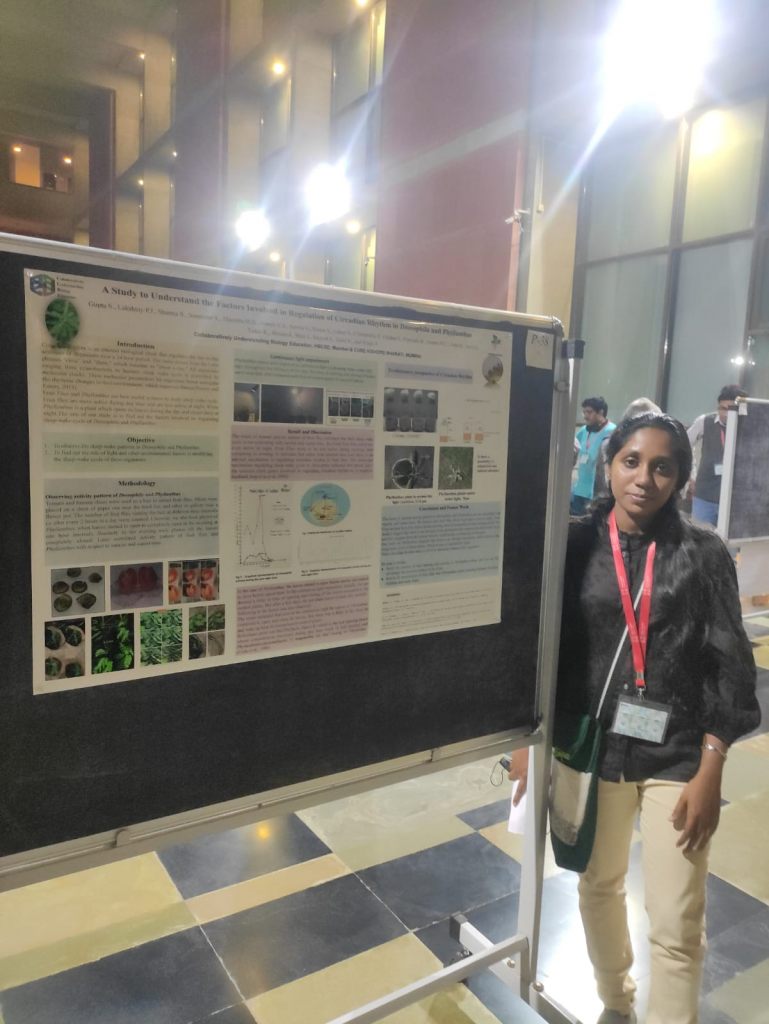CUBE students were invited and participated in Indian Society of Evolutionary Biologists (ISEB) Conference at Ahmadabad University from 9th to 11th February, 2023. Cubists @Theertha @Shraddha276 and @Lakshmy attended the conference and presented posters on their work in the conference. The conference included presentations on the theme of Evolution. Cubists presented three posters, on topics like Co-evolution, evolution of Circadian rhythm, etc. The poster presented by @Shraddha276 and group on the topic of Co-evolution between a plant (Cardamine) and Butterfly won the Best Paper Award at the conference. The paper is an investigative paper which is still in progress and includes the work done by cubists at Home Labs. It demonstrates how sophisticated science can be done by using simple models in a collaborative manner.
Prof. M.C Arunan from Kishore Bharati was also invited to the conference and Chaired a plenary session on Evolution on the topic: What is wrong with how we teach Evolution and how to fix it?
You can find the abstracts and posters below that have been collaboratively prepared by the CUBists and presented at ISEB Conference.
1st Poster
Abstract
Selection and shifting of host Plant by Psyche Butterflies (Leptosia nina) through co- evolutionary Interaction
Sonavane Shraddha V., Yadav Kiran, Arunan M.C, Pipewala Batul, Joshi Himanshu, Advani Jaikishan, P. Chitralekha
In this study we report the host range broadening and switching by Psyche butterfly (Leptosia nina).
The reported host plants of Psyche included Cleome (Cleomaceae), Creteva and Capparis sp. (Capparidaceae) but recently, the entire life cycle of Psyche was observed on Cardamine, a member of closely related family Brassicaceae, by CUBists. All these plants species are known to produced Glucosinolates, which are generally toxic to many other butterflies. The Psyche butterfly has evolved to detoxify the glucosinolates and survive on these plants.
Plants and butterflies have co-evolved for their survival. Plants release glucosinolates to protect themselves from herbivores, whereas Psyche caterpillars survive on plants by producing Nitrile Specific Proteins (NSP) which breakdown glucosinolates, neutralizing their toxic effect. Besides, the caterpillars also store toxic glucosinolates as a defence against predators. Our finding suggests that Psyche butterfly has evolved to complete its lifecycle on all plants producing glucosinolates.

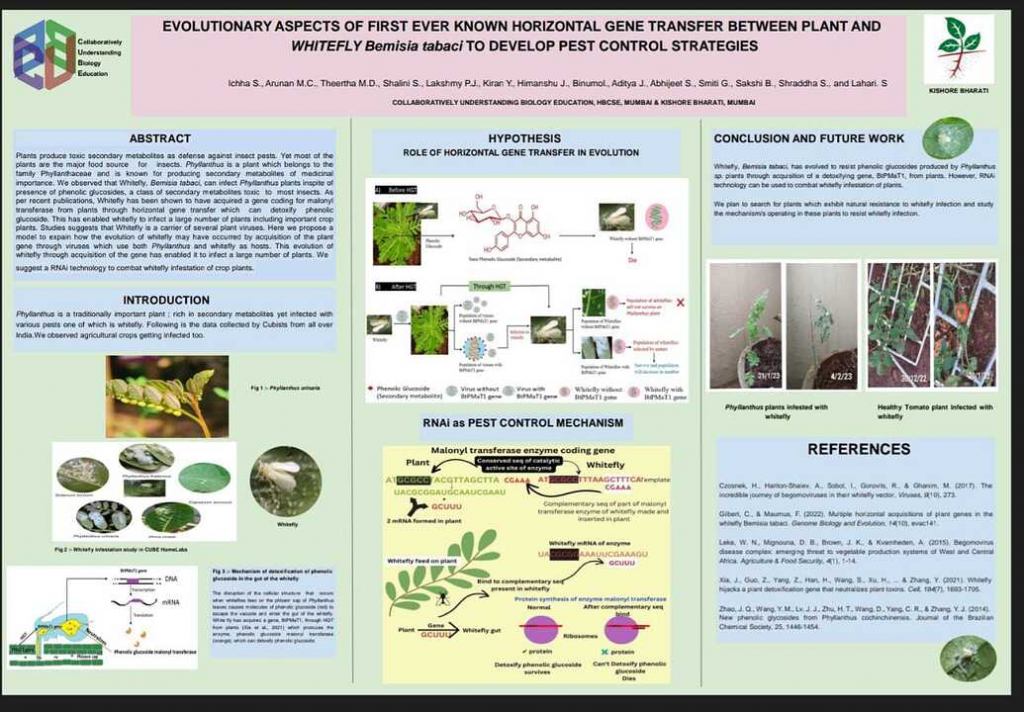
Cardamine Psyche interaction poster ISEB4 (1).pdf (1.3 MB)
Abstract
Combating first ever known horizontal gene transfer between plant and whitefly, Bemisia tabaci to develop pest control strategies
Ichha shah.,Arunan M.C.,Theertha M.D.,Lakshmy P.J.,KiranY.,Chitralekha P.,Himanshu J
Adithya J.,Abhijeet S.,Smiti G,
Plants produce secondary metabolites as defence against pests. Yet, most plants serve as food for insects.
Phyllanthus is a plant which belongs to the family Phyllanthaceae and it is known for producing secondary metabolites of medicinal importance.
We observed that Whitefly, Bemisia tabaci, can infect Phyllanthus plants inspite of presence of secondary metabolites.
As per recent publications, Whitefly has been shown to have acquired a gene, coding for melonyl transferase from plants through horizontal gene transfer which can detoxified secondary metabolites. This evolution of white fly through acquisition of the gene has enabled it to infect a large number of plants. We proposed to confirm this, and if found to be true, then suggest a model for combating many insect infestation of crop plants through RNAi technology.

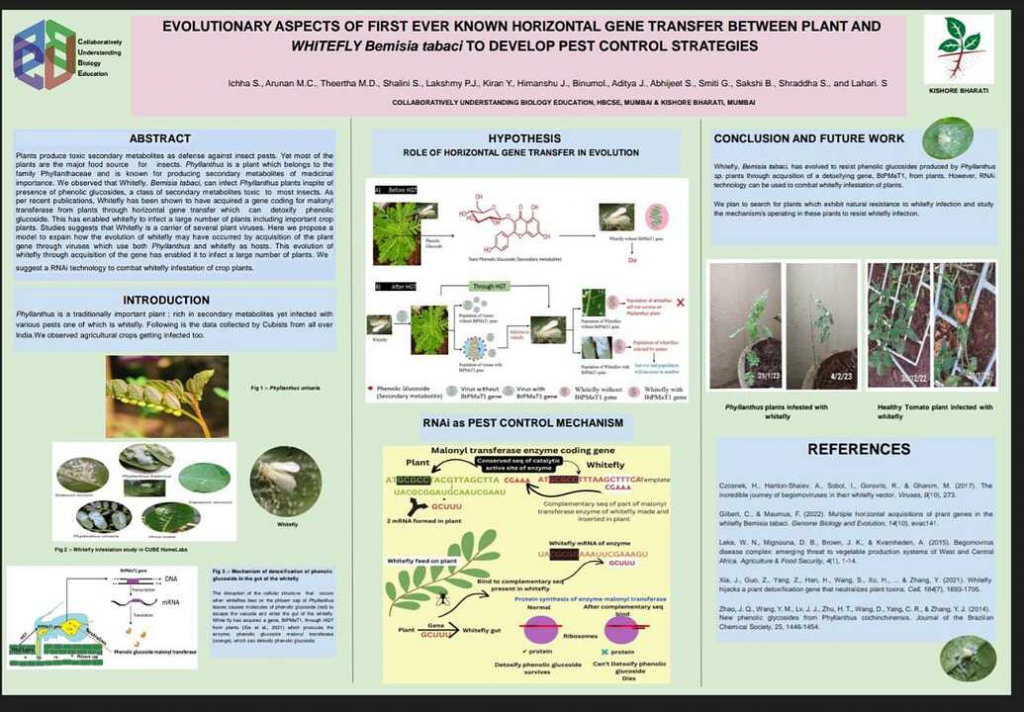
ISEB 2023_Whitefly-4.pdf (663.5 KB)
3rd Poster
Abstract
A study to understand the factors involved in regulation of circadian rhythm in different organisms
Smiti G., Sharma Shalini., Sonavane Shraddha V., Theertha M.D., Lakshmy P.J, P. Chitralekha
Most living organisms, including animals, plants, and microbes, are impacted by circadian rhythms. The objective of our study was to understand the role of factors in maintaining circadian rhythm in organisms like Drosophila and Phyllanthus with respect to their evolution over the time.
Although our project was done collaboratively by people from all over India, similar results were obtained; consistently two peak activities were seen, one before noon(9-11 am) and one in the evening (4-6pm). In case of Phyllanthus, the leaves unfold during day time and remain folded during the night, However our experiments showed that this rhythm could be disrupted on exposure to continuous light and darkness. Not only light but adverse conditions such as high light intensity, high temperature and low soil water content can also initiate leaf folding. Our results clearly indicate that both Drosophila and Phyllanthus have evolved circadian rhythm to better adapt to the environment.
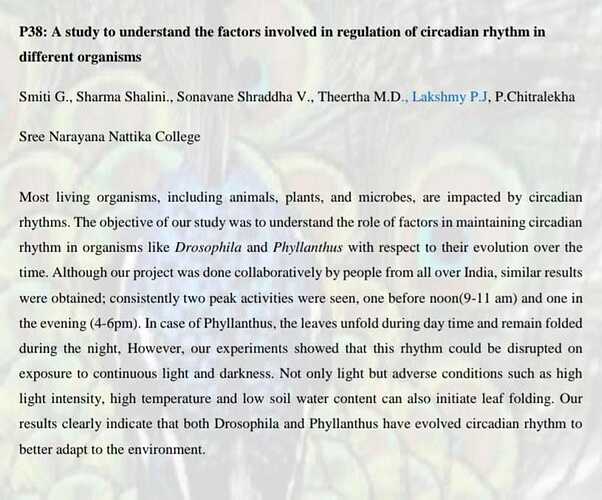
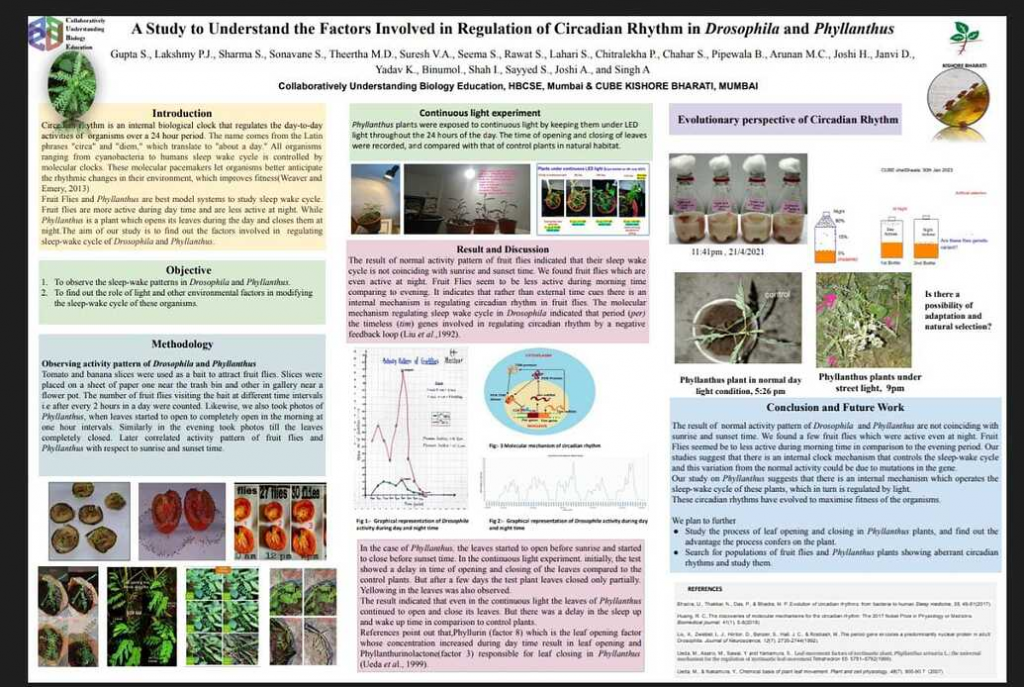
ISEB CIRCADIAN RHYTHM.pdf (2.9 MB)
Click on the given link below to know more about ISEB Conference
ISEB
Prof. MC Arunan from Kishore Bharati along with Prof. Milind Watve and other evolutionary biologists at ISEB Conference during plenary session on the topic: What is wrong with how we teach Evolution and how to fix it? (The picture in background on screen from book by Prof. Karen Haydock named: How do they evolve?)
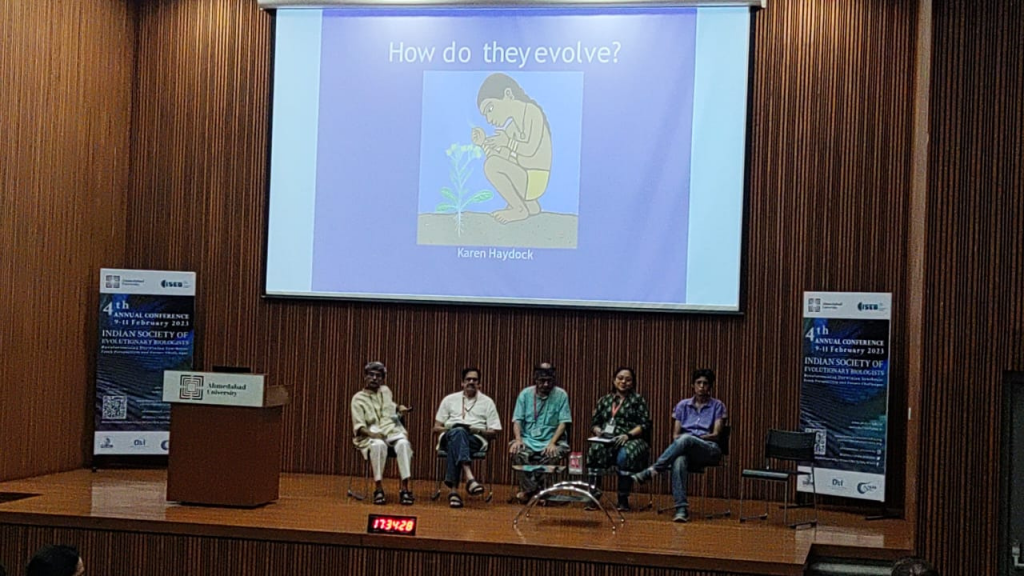
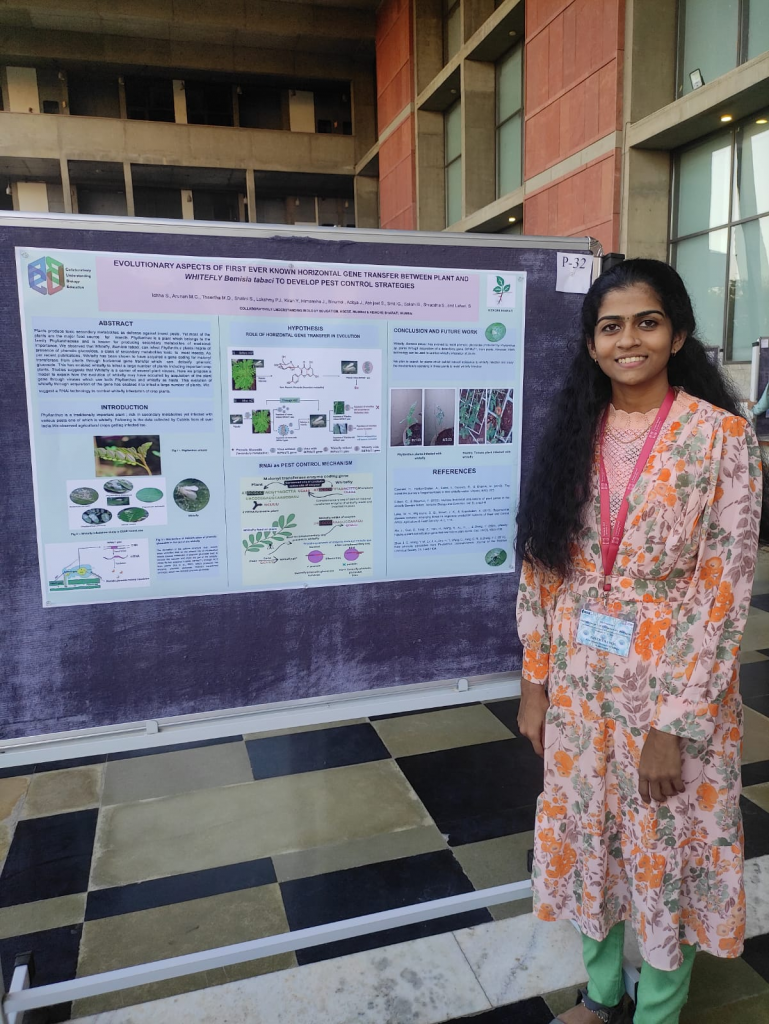
presenting her poster at ISEB Conference at Ahmadabad University
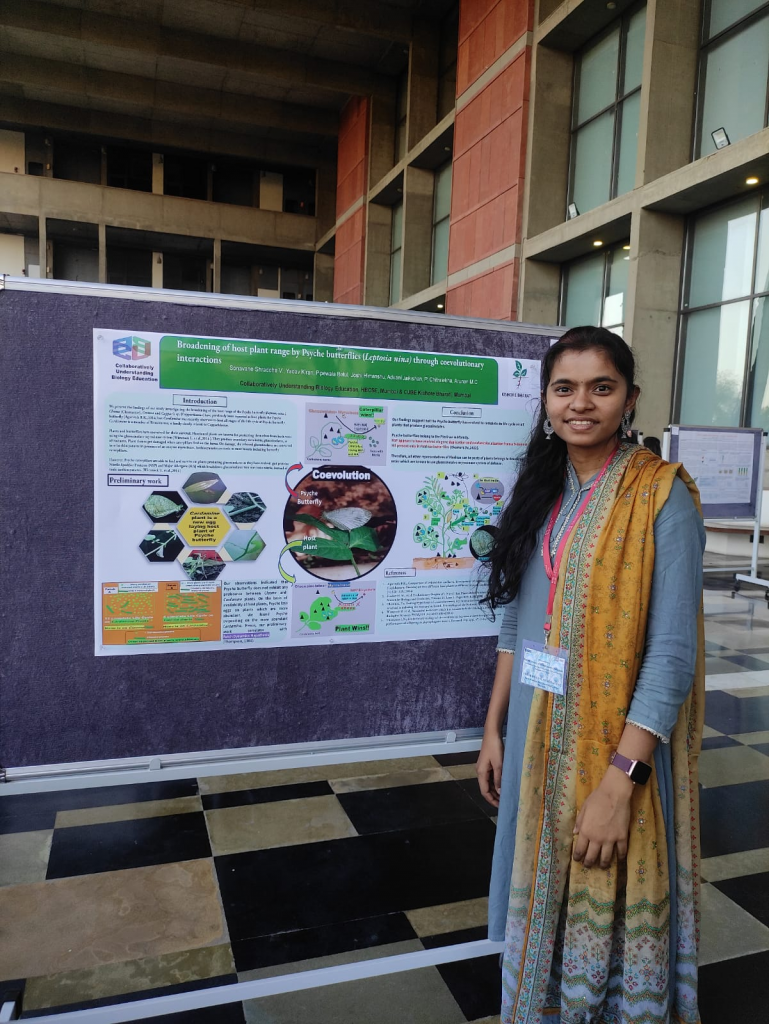
presenting her poster at ISEB Conference at Ahmadabad University
